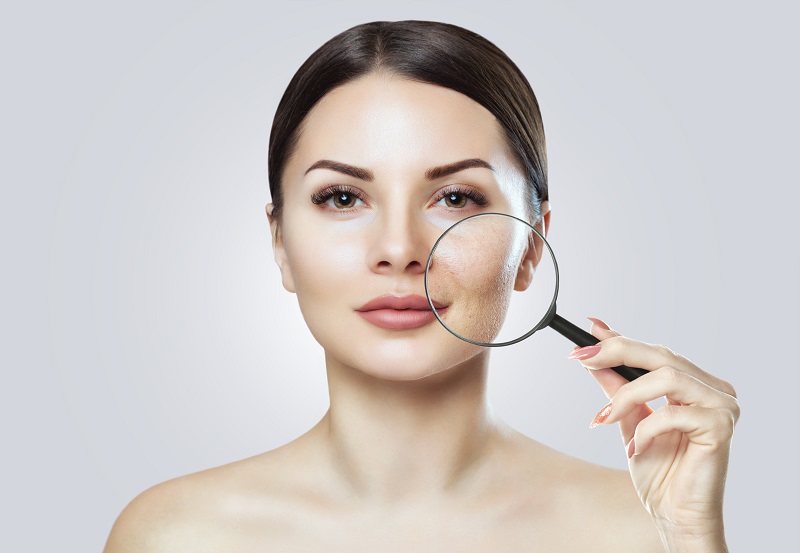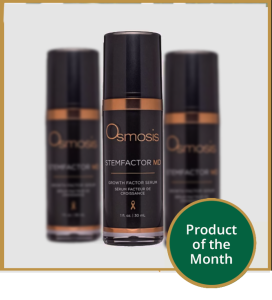A chemical peel is a skin resurfacing treatment that removes the skin’s top layer with chemical solutions and stimulates the body to grow rejuvenated skin.
Chemical peels are effective for acne scars because they stimulate collagen production and fill and even out the scar tissue. The new skin is smoother and brighter, with less visible imperfections.
This article explores the best professional chemical peels for acne scars, gives recommendations for chemical peels for home use, and helps you choose the best treatment for your skin.

Best Professional Chemical Peels for Acne Scars
Skin experts use three types of chemical peels for acne scars, depending on the patient’s skin type and the severity of the scarring.
Types of professional chemical peels:
| Light chemical peels | Medium chemical peels | Deep chemical peels | |
|---|---|---|---|
| Chemical solutions | Alpha-hydroxy acids (AHA) Beta-hydroxy acids (BHA) | Trichloroacetic acid (TCA) Glycolic acid Jessner’s solution | Trichloroacetic acid (TCA) Carbolic acid (phenol) |
| Number of required treatments | Several | One or more | One |
| Healing time | No downtime | Recovery up to one week | Recovery up to a few months |
| Type of acne scars | Hyperpigmentation, mild atrophic scars | Mild and moderate atrophic scars | Deep atrophic scars |
Chemical Peel Solutions
Chemical peels are distinguished by how deeply they penetrate the skin. The chemical solution(s) used for the treatment determines the depth of the peel.
Mandelic Acid
Mandelic acid is an alpha-hydroxy acid commonly used for professional and at-home chemical peels. It is composed of large molecules that take time to penetrate the skin and rarely cause irritation. It is less likely to cause discoloration and all skin types, including darker complexion, tolerate it well. It is often used in combination with salicylic acid.
Glycolic Acid (GA)
Glycolic acid is an effective exfoliating agent. It is another alpha-hydroxy acid but stronger than mandelic acid. It is commonly used in light and medium chemical peels. It stimulates collagen production and thickens the epidermis, helping to smooth atrophic scars. It also blocks melanin formation, reducing hyperpigmentation.
Glycolic acid is among the safer, less irritating chemical solutions and is often found in chemical peels for home use. It is suitable for all skin types.
Lactic Acid (LA)
Lactic acid is among the mildest AHAs used to treat hyperpigmentation and acne scars. It is safe for dry and sensitive skin because it only penetrates the uppermost layer and doesn’t cause irritation. It is used alone or in combination with other chemical solutions for stronger effects.
Salicylic Acid (SA)
Salicylic acid is a beta-hydroxy acid commonly used in acne treatments to prevent pore clogging and fight acne-causing bacteria. It also effectively treats acne scars because it stimulates collagen production, which improves skin texture and reduces post-inflammatory scarring.
Salicylic acid is gentle and typically used for mild acne scars. Since it effectively reduces sebum and unclogs pores, skin experts usually recommend it for oily skin.
Trichloroacetic Acid (TCA)
Trichloroacetic acid is a powerful chemical solution commonly used in medium and deep chemical peels. It penetrates the epidermal and dermal layers, destroys dead skin cells, and increases collagen and elastin production in the dermis.
It can also be used as a spot treatment for deeper scars. The chemical peel provider applies TCA in the center of the deep scar to reconstruct the scar tissue but doesn’t use the acid on the rest of the face.
Patients require recovery time of up to two weeks after having a TCA chemical peel treatment.
Jessner’s Solution (JS)
Jessner’s solution is a mix of lactic acid, salicylic acid, and resorcinol. It is used as a light or medium peeling agent to improve pigmentation, skin texture, and treat acne and acne scars. It is commonly used for oily skin. It can be too aggressive for dry and sensitive skin.
Carbolic Acid (Phenol)
Phenol is used for deep chemical peels. It is more aggressive and penetrates deeper than other solutions, requiring sedation and local or general anesthesia.
Phenol poses the greatest health risk and requires long recovery but provides the most effective results for pitted acne scars. It is suitable for patients with fair skin who want to see dramatic results with one session.
Note: For more solutions for acne scars read our article and find out what are the best treatments for acne scars.
At-Home Chemical Peels
Chemical peels sold for home use typically contain smaller concentrations of acids used in professional chemical peels. At-home peels don’t contain phenol because it is very aggressive and requires sedation and local or general anesthesia.
At-home chemical exfoliation products provide numerous benefits like removal of dirt and dead skin, unclogging of pores, and improvement of skin tone. They are too gentle to eliminate acne scars fully, but help reduce their appearance and aid in acne prevention.
Vibrant Skin Bar experts recommend the regular use of gentle AHA and BHA exfoliation and cleansing solutions to prevent acne and acne scars.
Things to Consider Before a Chemical Peel
Professional chemical peels can be very beneficial to acne scar patients, but they carry certain risks. It’s best to schedule a consultation with a licensed chemical peel provider to learn whether a chemical peel is right for you.
Your chosen skin expert will examine your skin and recommend a chemical peel which corresponds to your skin and acne scar type.
For example, if you have hypertrophic scars, your medical provider may recommend a more suitable cosmetic treatment such as laser resurfacing or cryotherapy. If you have a darker complexion, they may recommend a medium peel with glycolic acid.
For your safety and the best results, follow certain pre-treatment procedures before a chemical peel. The preparation includes avoiding the sun and certain cosmetic treatments for several weeks and using medications that your medical provider prescribes.
Note that chemical peels cause side effects such as redness, swelling, and scaling. Light chemical peels require no downtime, while deep chemical peels require wearing bandages for several weeks.
Choose a skilled, experienced medical provider for your acne scar treatment to ensure the maximum safety of the procedure.
Conclusion
Chemical peels are among the best cosmetic treatments for atrophic acne scars. They help even out scar tissue and improve skin texture, providing a smooth, glowing complexion.
Weigh in the benefits and potential downsides of the procedure before you decide and make sure you have a safe cosmetic experience by choosing a reputable skin specialist.
Next, find out how back chemical peels help treat bacne and acne scars on the back.




